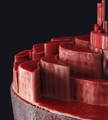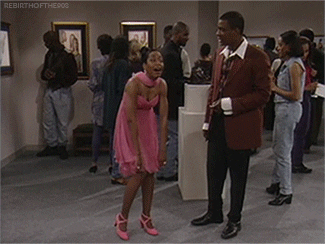Shifting Muscle Fibers - Is it Possible??
FREE SPEED & POWER WORKOUT!
Download by entering below

How To Increase Fast Twitch Muscle Fibers
There are various types of muscle fibers. There is a Type 1 muscle fiber that is more endurance based. There is a Type 2 A which is a type of fiber used during a heavy load like a back squat or a bench press; it is explosive, but not as explosive as the Type 2 X muscle fiber.
Muscle Fiber
A muscle fiber is a myosin-heavy chain isoform. Typically the muscle fiber type is identified through biopsies. The biopsies can be done through single fiber isolation or massive stains.
Getting a biopsy to evaluate muscle fibers helps predict where an athlete can be good within specific sports. It is based upon the genetic foundation. We can look at an athlete’s fiber type, and say they are more Type 1 with more endurance and can handle a high volume of work because they can’t put out a ton of intensity, they will probably be marathon runners, 10k runners, or some long-distance sport.
A weightlifter like Lu Xiaojun, arguably one of the best weightlifters ever, likely at an early age had a lot of Type 2 X muscle fibers, predicting him to be put into the weightlifting world. Elaine Thompson, possibly the best female sprinter ever, very likely has a lot of Type 2 A and Type 2 X muscle fibers. She can have a large amount of power output that can be sustained for 20 to 22 seconds.
Even bodybuilders have a large amount of Type 2 A muscle fibers and a much greater percentage of Type 2 X muscle fibers relative to control groups.

Genetics plays a role in where athletes will go in their sports performance career and also what happens before hitting puberty. There is a fair amount of research that supports what a kid is exposed to at an early age up until hitting puberty, the body doesn’t know what is going on and is just preparing for a long, arduous life. Now think of farm strength or playing basketball all summer long being done before the age of 12 or 13 years of age, the muscle fiber type needed is predetermined based on the parents and what physical challenges the body has been exposed to before puberty.
Shifting Fiber Types: Is It Possible?
Talking about just heavy lifting, just resistance-based training, what the research information demonstrates is that when things like heavy front squats, heavy back squats, heavy bench presses, and other lifts that focus on straight-up strength will cause a shift to more Type 2 A muscle fibers. Athletes will be strong but not necessarily as twitchy as someone who is explosive, but the endurance fibers will shift over to Type 2 A.

Doing power-based training, things at very high speeds like box jumps, and just doing power-based training, the muscle fibers will stay stable with Type 2 X muscle fibers and a slight decrease in Type 1 muscle fibers.
Some research on combo groups where athletes are doing heavier lifting in combination with an explosive movement, like a contrast method of a back squat with a hurdle hop, has demonstrated that athletes will see an increase in their Type 2 A and Type 2 X muscle fibers. The shift is mainly based on the ratio with the diminishment of their Type 1 fibers.

Some muscle groups when used or not used will fiber shift faster than other muscle fibers, specifically the vastus lateralis. In control groups, most people are about 45% Type 2 A and about 5% Type 2 X. Ironically, most people think bodybuilding will make an athlete slower, but in most research bodybuilders have been shown to have 15% Type 2 X muscle fibers.
Is it possible to fiber shift with endurance-based training? There is an interesting study done with identical twins. One of the twins didn’t do a thing. The other twin was an endurance-based athlete. The researchers compared the lethargic twin and the endurance-trained twin and noticed the endurance-trained twin had a much higher percentage of Type 1 muscle fibers. The lethargic twin had much more Type 2 A and Type 2 X muscle fibers. The study shows that the body can shift to more Type 1 muscle fibers when partaking in endurance-based training.
Recovery And Tapering
Distance runners, or even a wrestler, when they have less volume in their training for the last week or two, science shows that during that taper into a peak that there is a better shift into Type 2 X muscle fibers. Doing mobility and recovery-based methods with endurance athletes during the taper will improve their overall kick with the fiber shift to Type 2 X while not losing the aerobic capacity they built up throughout their training.

Recap
Fiber shifting is possible. An individual who is primarily Type 2 A can become a more explosive individual and develop more Type 2 X muscle fibers. Depending on an athlete’s goal is a big determinant of how to shift fibers one way or another. I would argue that a large percentage of athletes need more Type 2 A and Type 2 X muscle fibers. With that idea in mind, it is okay to perform bodybuilding movements to help shift to more Type 2 X muscle fibers.
The key is to understand that fiber shifting can happen based on the type of training and the volume of training being performed.
Related Posts
Blog Topics

Yo, It's Dane
Welcome to the Garage Strength Blog, where it is my goal to provide you with the experience and knowledge I've gained in the strength and conditioning world over many years of learning from both successes and failures. I train elite-level athletes in a multitude of sports from the high school to professional levels, already producing 5 Olympics and 30+ National Champions. If you want to be the next champion I train, check out my strength programs below!
Start Training With Me

Join for free educational videos EVERY WEEK on strength coaching and athletic performance



